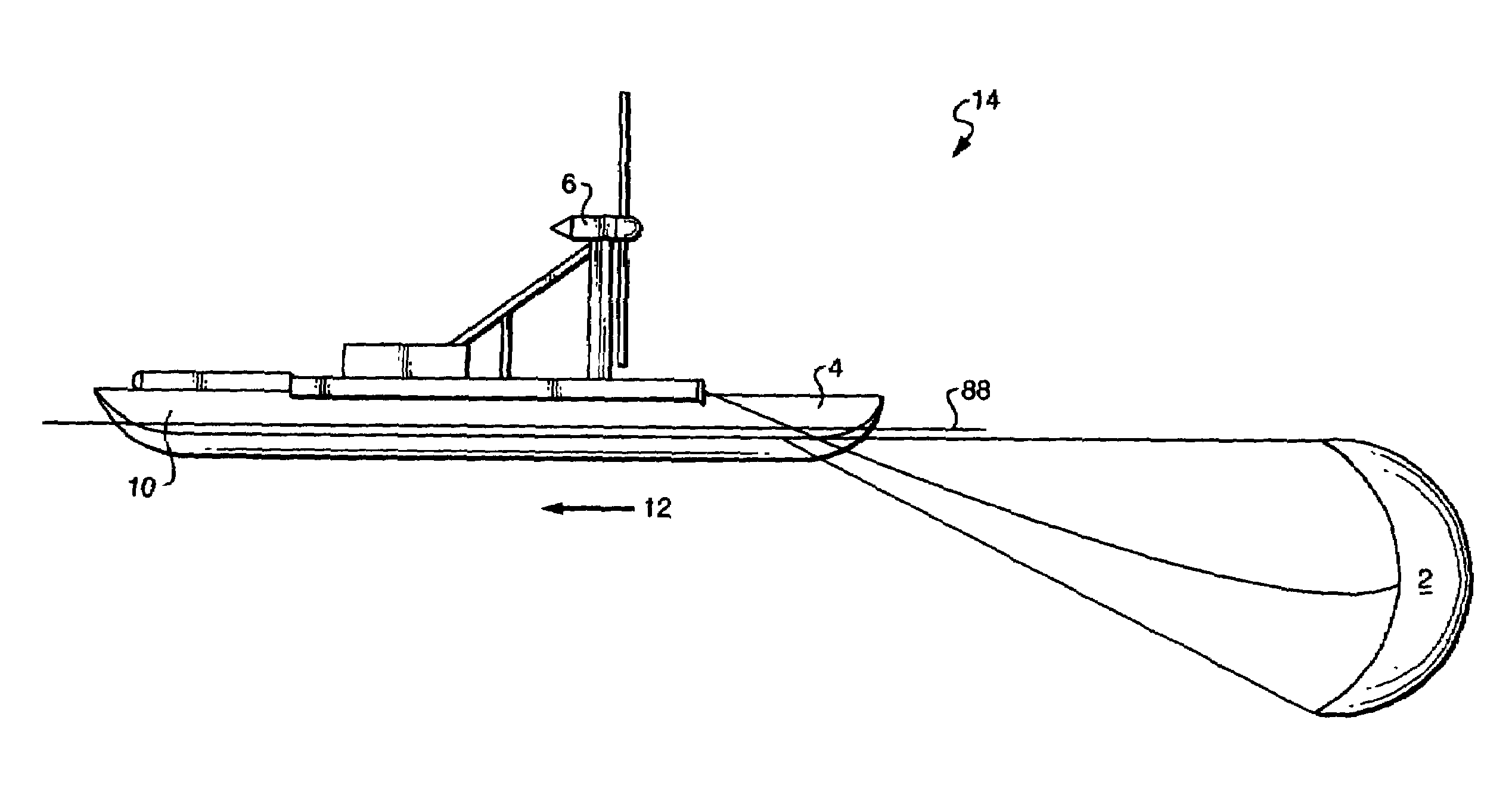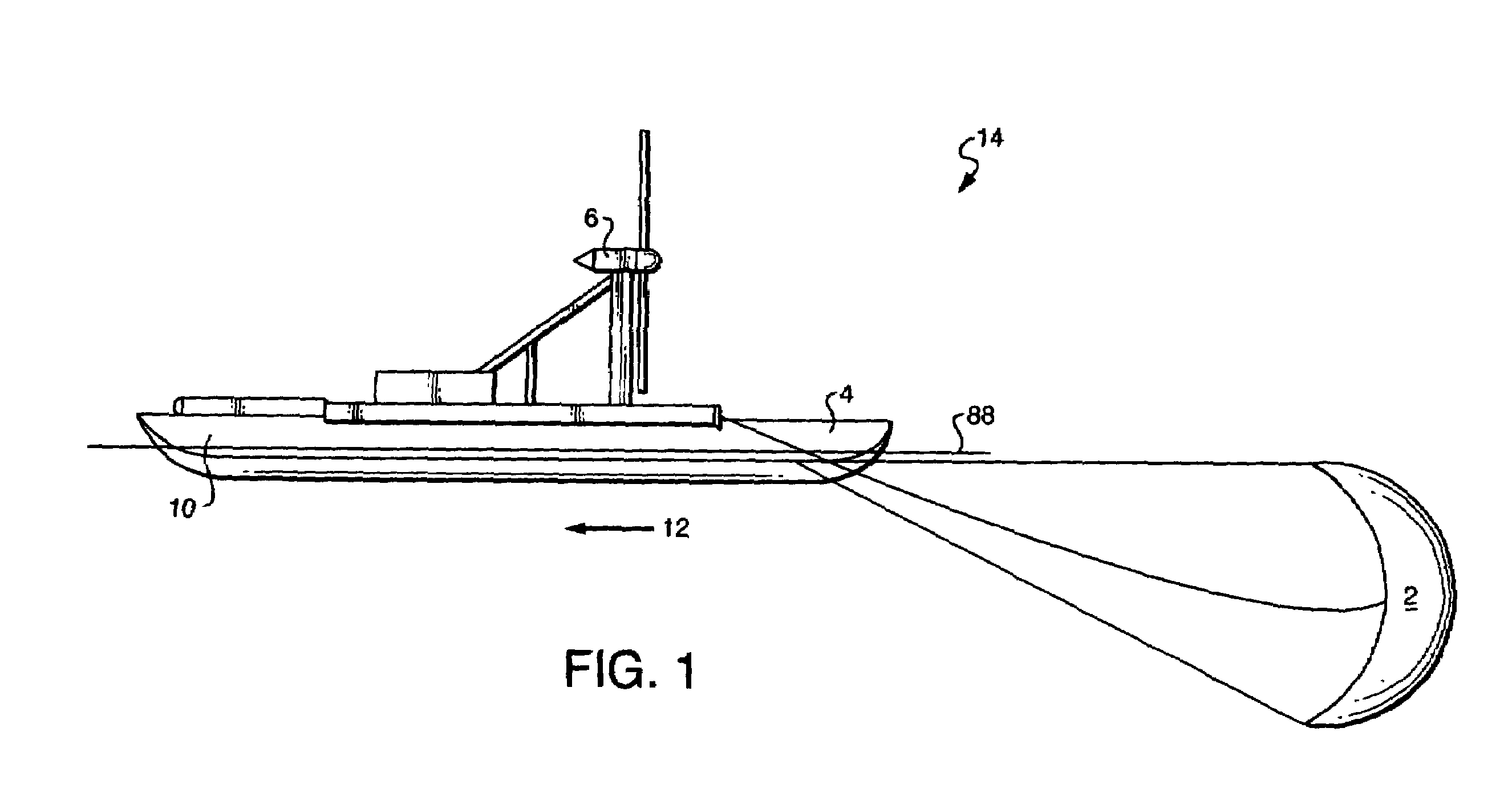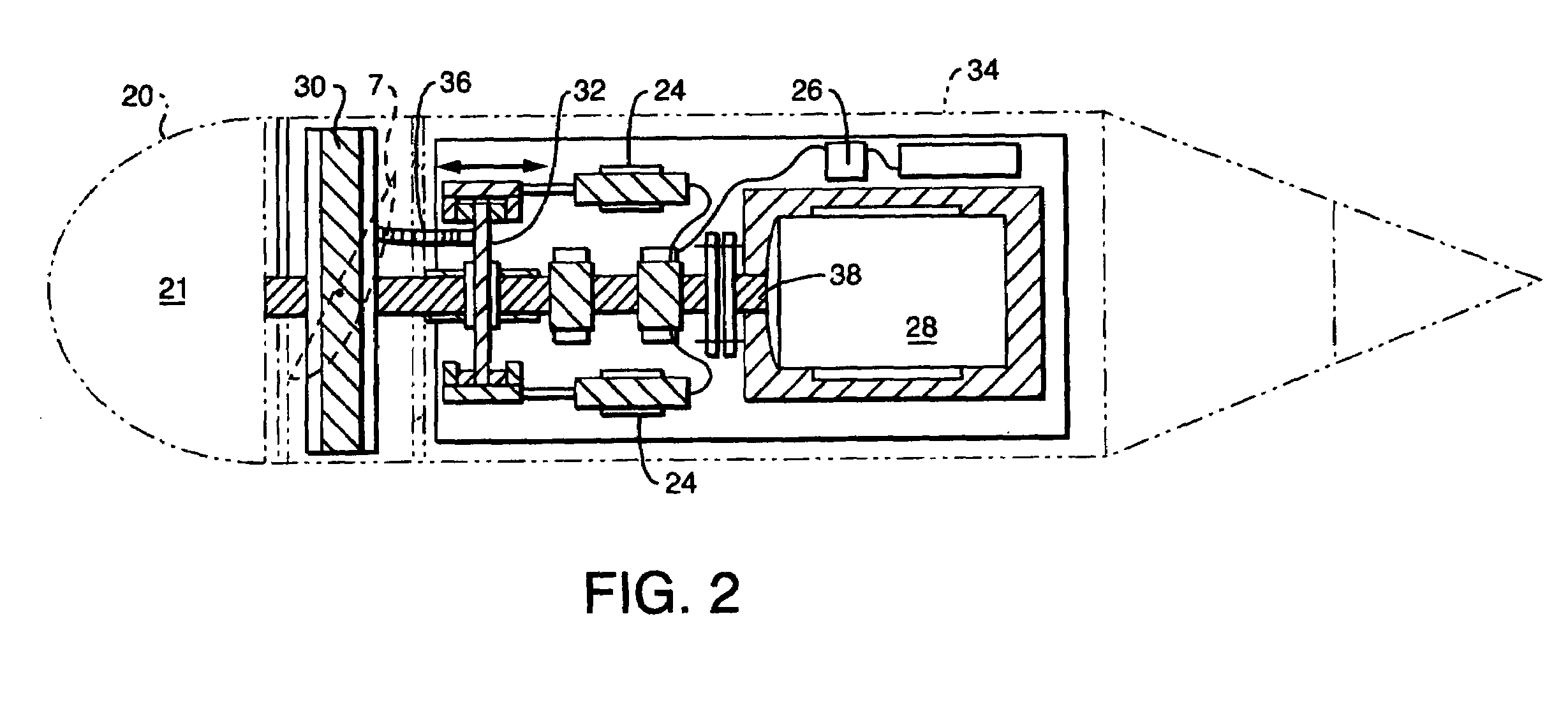Sea-based hydrogen-oxygen generation system
a hydrogen-oxygen generation and sea-based technology, applied in the direction of vessel auxiliary drives, special-purpose vessels, vessel construction, etc., can solve the problems of limited political opposition, and high cost of energy generation at sea, so as to reduce objections.
- Summary
- Abstract
- Description
- Claims
- Application Information
AI Technical Summary
Benefits of technology
Problems solved by technology
Method used
Image
Examples
Embodiment Construction
[0057]The present system utilizes a number of collection vessels each of which has on-board wind or wave power devices to convert the energy contained in the wind and waves to an electrical current which is then used to create hydrogen and oxygen from water by means of electrolysis. The collection vessels are of two distinct types: the wind-based collection vessels use the power of the wind to turn a wind turbine, which is coupled to an electric generator; the wave-based collection system uses the energy stored in waves to perform the same function.
[0058]The present wind-based collection system utilizes 19th century technology, using a turbine with many blades on a single turbine rotor. In this way it maximizes the amount of blade surface area exposed to the wind to create increased torque, which, in turn, increases the output of the generator used for electrolysis. Any combination of voltage and current will cause the electrolysis process to work. Therefore, the main area of concer...
PUM
 Login to View More
Login to View More Abstract
Description
Claims
Application Information
 Login to View More
Login to View More - R&D
- Intellectual Property
- Life Sciences
- Materials
- Tech Scout
- Unparalleled Data Quality
- Higher Quality Content
- 60% Fewer Hallucinations
Browse by: Latest US Patents, China's latest patents, Technical Efficacy Thesaurus, Application Domain, Technology Topic, Popular Technical Reports.
© 2025 PatSnap. All rights reserved.Legal|Privacy policy|Modern Slavery Act Transparency Statement|Sitemap|About US| Contact US: help@patsnap.com



